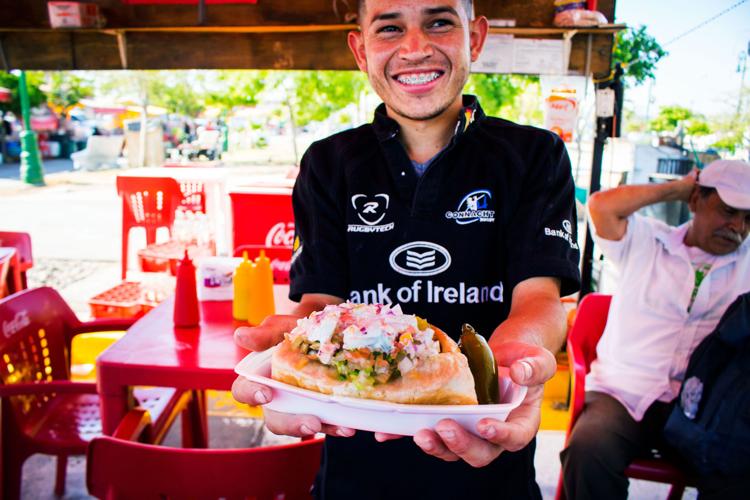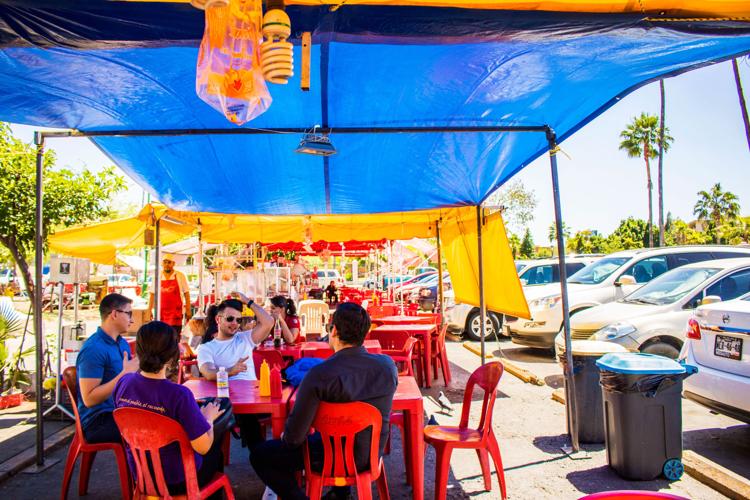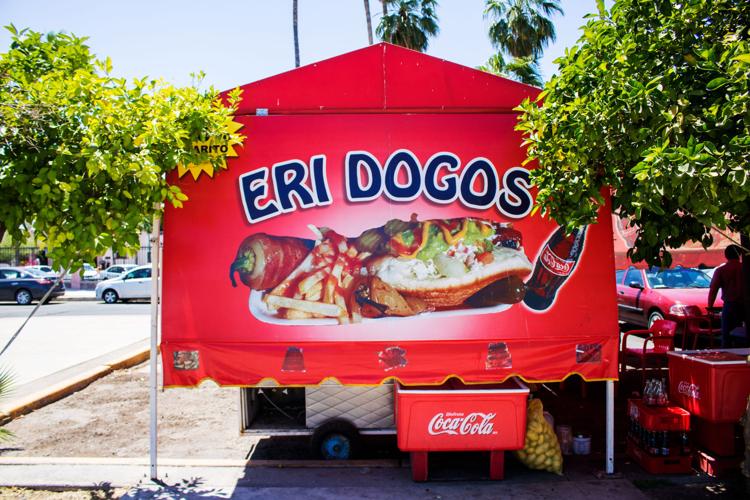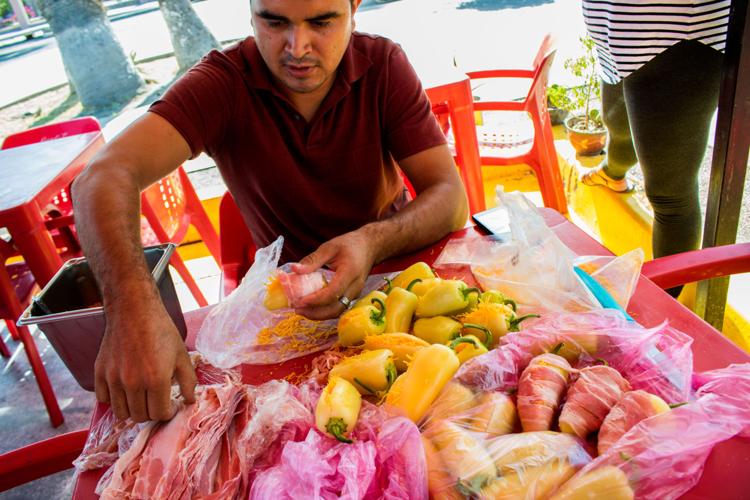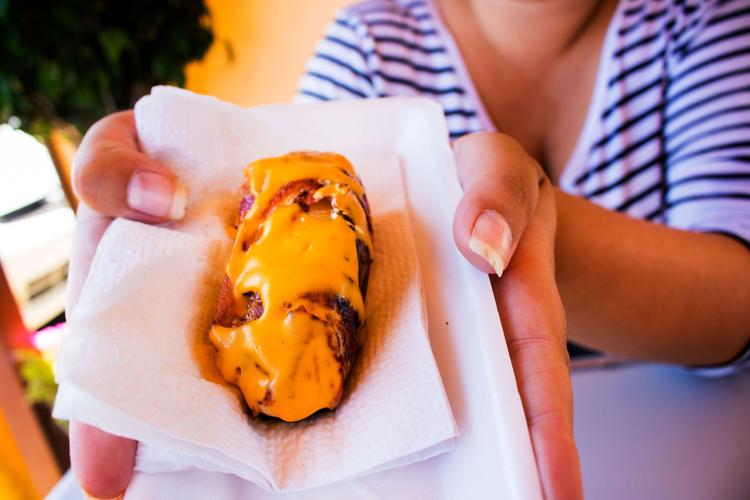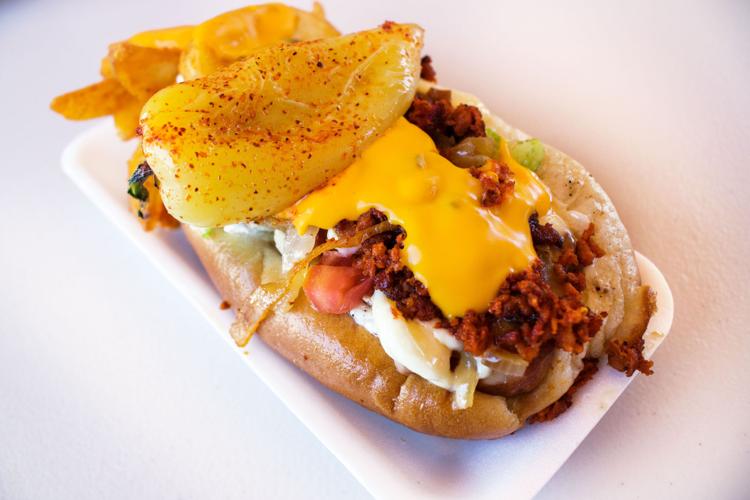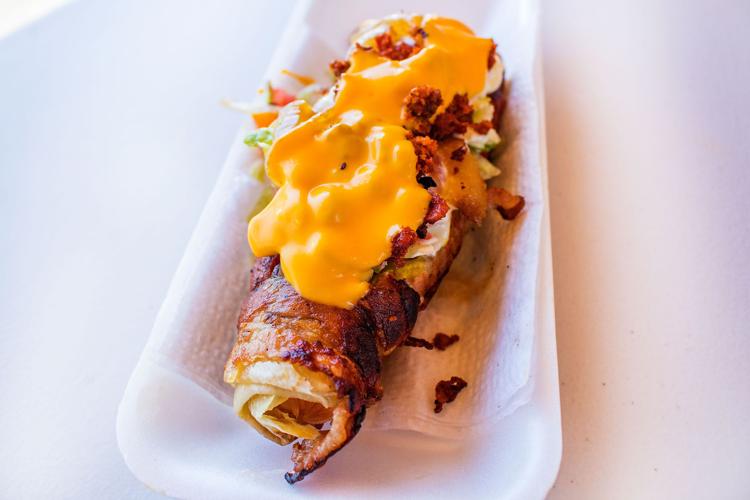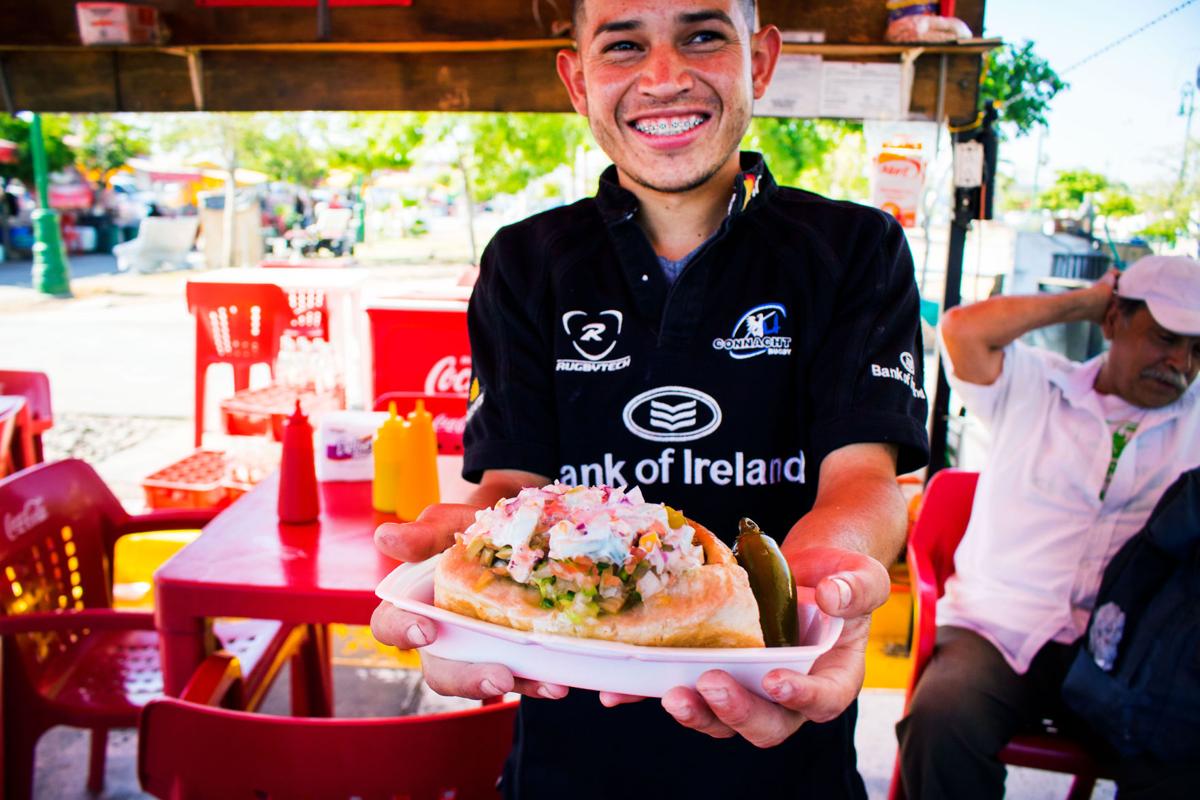It's graduation day at the Universidad de Sonora, and a group of gowned students are posing for pictures in front of the grand facade while onlookers wipe sweat off their faces and text excitedly.
Across the parking lot, there's another kind of scene. One that involves lots and lots of hot dogs. Ten carts are lined up under red and blue tarps, each with the same menu and a colorful salsa display lining the front of their operations. Up top they have rows of little weenies encased in flour tortillas and wrapped in bacon.

Momias, ready to be thrown on the grill.
This is apparently the slow period at Dogos de la Uni, the sunny plaza adjacent to Sonora's highest-ranked university. When it picks up after 5, the space can hold more than 20 different hot dog vendors who work in 12-hour shifts throughout the night. The well-trodden park is called Emiliana de Zubeldía after a Spanish pianist who taught on the faculty here, but it really goes by the nickname la Plaza del Hot Dog.

The plaza was a little dead around noon, but it really gets pumping when the sun sets.

The tents are so colorful and all have different logos.
It's a common misconception that Sonoran hot dogs come from Tucson. I mean, what's not American about a hot dog wrapped in bacon with beans, tomatoes and mayo? But the real origin story points down to Hermosillo, and talks of Mexican ballgames and Oscar Mayer marketing pitches from the '50s.
Today, there are at least five distinct styles of Sonoran hot dogs in different cities throughout the Mexican state, according to author Minerva Orduno Rincon. (Road trip, anyone?) It's obvious, from the get-go, that these Sonoran dogs are very different from the ones we know in the Old Pueblo.

A Dogo Bomba with seasoned fries from Uni Dogos, costs about 60 pesos or $3.00.
For one, they're freaking huge! I counted more than a dozen ingredients including: bacon, beans, mayo, tomatoes, mushrooms, thousand island, avocado sauce and nacho cheese. (My new favorite is a white condiment called aderezo, with cucumbers and corn immersed in fresh Mexican cream.) The hotdogueros just pile it on, until the dogs are fat and bulbous and difficult to eat. But so rich. So rich.
The second thing I noticed, is that all these dogs have soft crumbles of chunky chorizo on top. This takes it to a whole new savory level and adds a little hint of spice. Number three, they all seem to come with seasoned steak fries.

Armando Vargas holds up a bacon-wrapped momia, or mummy in English.
Walking the line, all the menus look very similar at first glance. It's a wonder that this place even exists, with everyone selling the same thing. But when you order, you'll notice that the dogs have subtle differences. Some might use steamed buns, while others are toasted on the grill. (After tasting both, I prefer the latter.) Some proprietors have fussier salsas, and some get crazy with the hot dogs themselves.
Armando Vargas stands out at the green Uni Dogos tent. His menu is much larger, with different varieties like the Rosarito and the Bomba hot dog, featuring a hefty link stuffed with jalapeños and cheddar cheese that he gets from Magdalena, Sonora. This, he does not wrap in bacon, because it is so big and savory already. And for 10 extra pesos, you can add a generous plop of "Queso Philadelphia," or you guessed it, cream cheese.

Momias are like little crunchy bacon tubes of Sonoran dog stuff.
Vargas also goes big on the momia, a side snack that seems to have originated in Hermosillo. It's a hot dog (Vargas likes to use turkey dogs to differentiate himself) wrapped in a flour tortilla, then wrapped in bacon. He tosses it on the grill for a few, then splits it open lengthwise and stuffs it with the same ingredients you get on the Sonoran dog. It's easier to eat, that's for sure. But damn, it is hot.

Gabino Rey calls himself the "Rey de los Toritos," or the king of these yellow peppers right here.

Armando's toritos are wrapped in bacon and smothered with nacho cheese.
Last but not least, you've got the toritos. If you've been to a cart in Tucson, you'll know what these are. They're the little yellow peppers that come on the side. Sometimes spicy, sometimes limey, sometimes covered in more chile flakes. The heat really cuts through the richness of the dog, making your lunch a visceral experience of different bodily aches. (Psychedelic.)
The peppers in Hermosillo are of course stuffed with various ingredients. Because that's what they do here. Nearby they were stuffing them with shredded cheddar and wrapping in bacon. But Armando chooses to do something different. He covers his pepper in nacho cheese and stuffs it with ... are you ready? A hot dog!


